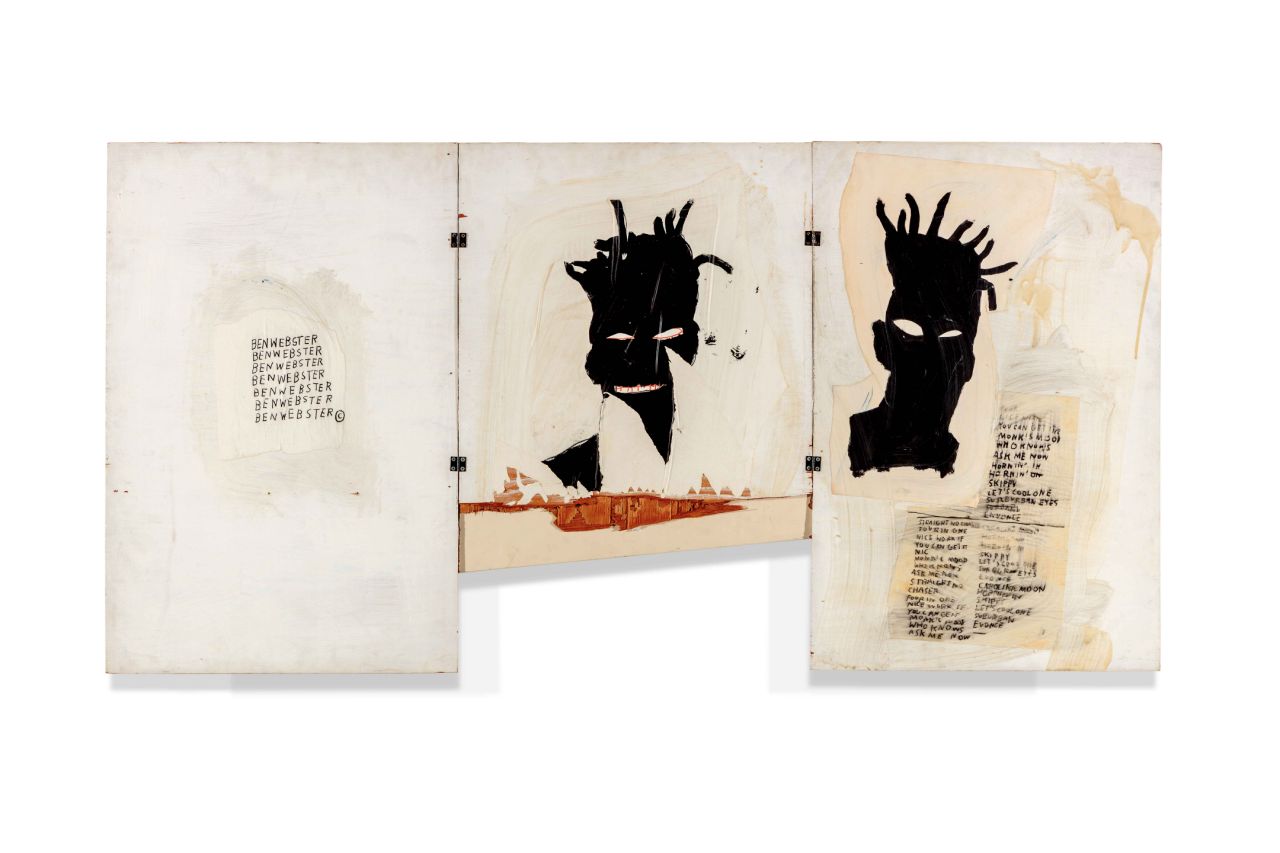
Christie’s realized £39,566,000 ($52,820,610) on June 29 for its “Postwar and Contemporary Art Evening Sale.” The sell through rate was 92 percent by lot, and 98 percent by value, with the top price being paid for Jean-Michel Basquiat’s Pork, which went for £5.1 million ($6.8 million).
The auction house went into this evening’s sale with a reduced £26.3-37.7 million estimate, down from the original £40.3-57.7 million because their star lot, a Gerhard Richter abstract that had been on view throughout the lead-in to the sale, was withdrawn at the last minute. It had been estimated at more than £14 million. No reason was given, but the American owner must have sensed it was not going to sell.
That may have been a miscalculation, because almost everything else did.
The real star lots instead were the two Basquiats which were being sold by the actor and former boyfriend of Kate Moss, Johnny Depp. Depp is currently undergoing divorce proceedings from his wife, Amber Heard, and these paintings realized a substantial investment for him.
An early fan of Basquiat, Depp bought a sizable 1981 self-portrait on three hinged panels in 2000 for an almost treble estimate $578,000 in New York. The painting now had an estimate of £1-1.5 million pounds ($1.5-2.2 million dollars at the time of catalogue printing, but down dramatically to $1.1-1.6 million by sale time in dollars). It attracted 10 telephone bidders, some from Asia, who did battle with Bill Acquavella in the room.
Acquavella finally scooped his trophy—more than trebling the estimate this time, for £3,554,500 ($4,745,258).
The second Basquiat from Depp was the more compact door painting, Pork (1981), which was estimated at £2.5-3.5 million. It had been bought from Blum and Poe in 1998. This time Asia triumphed as the sale-topping lot was sold to Elaine Holt from Christie’s Hong Kong.
Andy Warhol,
Two Dollar Bills (Fronts) [40 Two Dollar Bills in red]
(1962). Courtesy of Christie’s Images Ltd.
Continuing US interest in the sale was a 1963 Roy Lichtenstein of food, Mustard on White, from the collection of Roxanne Rosoman, the widow of the talented but underrated British artist, Leonard Rosoman, who had lent the picture to the Tate since 1993. Estimated at £1-1.5 million, it seemed to go cheaply, below the estimate for £962,500 or $1.3 million, to an Asian buyer.
It was one of only seven lots to sell below estimate, others being Jake and Dinos Chapman’s sexually disturbing group of mannequins, Zygotic Acceleration (1995), once part of the Saatchi collection, which was bought by their dealers, White Cube, for £218,500, another being Paul McCarthy’s Mechanical Pig.
Paul McCarthy Mechanical Pig (2003-2005). Courtesy of Christie’s Images Ltd.
The pig had been part of the Essl collection in Austria, a trove which Christie’s had sold in 2014. It became Christie’s property as it had been guaranteed and bought in with a low estimate then of £1 million. Now with a reduced £400,000 estimate, it sold for £362,500. Another bought in lot from the Essl sale was a multi-panel painting by Martin Kippenberger that originally had a £2-3 million estimate on it, and now sold for a reduced £1.45 million ($1.95 million).
The buyer, London and New York dealer, Per Skarstedt, was one of the most active bidders in the room this evening. He and his London director, Bona Montague, also saw off competition from Spain-based art agent, Edmund Peel, to pay a healthy £1.7 million ($2.28 million) for Miquel Barcelo’s large 1991 mixed-media canvas, Pinassi, and then paid an above-estimate £1.3 million ($1.75 million) for Georg Baselitz’s trademark upside-down painting of an eagle from 1982. So, they really covered the big names in European figurative painting in the 1980s and early 90s.
Hurvin Anderson,
Untitled (Lower Lake) (2005). Courtesy of Christie’s Images Ltd.
As at Sotheby’s, Asian bidding was prominent. Apart from buying the top Basquiat and the Lichtenstein, Asian buyers bought works by Hurvin Anderson, Roman Opalka, George Condo, Zeng Fanzhi, and Sean Scully, paying a sterling record of £902,500 ($1.21 million) for the 1992 abstract, Eve.
Going into this sale, with the lowest estimate for a Christie’s evening sale of contemporary art in London since 2009, the company came out with a hugely positive result and, knowing that it has another £42-60 million of contemporary art waiting in the wings for tomorrow’s “Defining British Art” sale.
Although tonight’s sale trailed Sotheby’s, they are still likely to emerge on top in London, though the combined total is unlikely to match the sales total of £95.6 million last June. But more than anything else, it proved that the international art market can thrive in London despite Brexit and whatever is going on in Westminster.